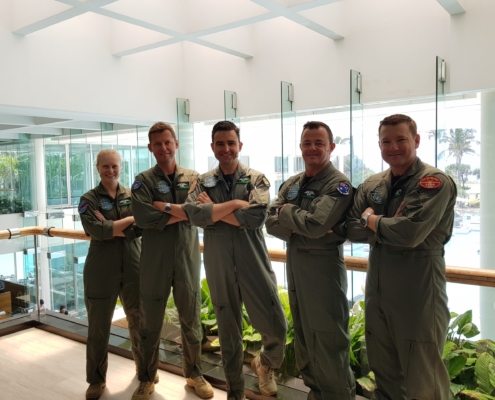 https://www.afterburner.com/wp-content/uploads/2024/09/Christian-_Boo_-Boucousis-on-stage-1.jpeg
1066
1600
Nate Riggins
/wp-content/uploads/2024/07/Afterburner-Logo-Resize-Fullcolor-300x93.png
Nate Riggins2024-12-19 14:08:102024-12-26 14:56:55How to Pick the Right Guest Speaker for Your Event
https://www.afterburner.com/wp-content/uploads/2024/09/Christian-_Boo_-Boucousis-on-stage-1.jpeg
1066
1600
Nate Riggins
/wp-content/uploads/2024/07/Afterburner-Logo-Resize-Fullcolor-300x93.png
Nate Riggins2024-12-19 14:08:102024-12-26 14:56:55How to Pick the Right Guest Speaker for Your Event
6 Combat-Proven Keys to Driving Successful Change Management
With the digital revolution driving change in every aspect of our lives, we, as business leaders, are charged with guiding our organizations to success. Through my 23 years of military leadership, I discovered successful change management could only be found driven by the development of an elite team focused on the journey. More succinctly, Successful Change Management must be Collaboratively Built and Collectively Executed!
Click below to view the full webinar recording:
As you join me for the next few paragraphs, let’s examine the six combat-proven keys to successful change management which I used to drive success over the last two-plus decades of military service.
One of my favorite guiding quotes is…
“There is nothing more difficult to take in hand, more perilous to conduct, or more uncertain in its success than to take the lead in the introduction of a new order of things.”
While this insight could have been written by any of our scholars or leaders today, it was in fact written in 1532 by Machiavelli. But it reminds us of the extreme challenge of change leadership.
As we sit in offices, firmly planted in our leadership comfort zones, we must remember that “70% of Change Initiatives Fail… Because They Do Not Have Correct Focus” (Gallup News, 2013). Or that “44% [of change initiatives] Run Out of Steam After Start [and] 1/3 Fail to Improve Performance” (McKinsey, 2015).
To be successful, to ensure the success of our organizations and teams…we as leaders must step outside our comfort zone and force our teams outside theirs.
To better understand how to lead change, join me on a journey into the experience of my first military command. It was a quest into a new world of leadership, serving in an equivalent role to CEO of a $15M business. As I sat behind my desk with the door closed that first day, it felt as if I were about to take a leap into an unknown world. I stared at the ceiling wondering if I was ready. When I opened that door and walked down the hall to address the members of the squadron, they would be looking to me for guidance, for direction…for answers. What if I did not know…What if I was not ready?
Just hours before, the Air Force passed the Guide On to me then I saluted and stated…” Sir, I Assume Command.” With these four words, hundreds of years of tradition surged through my veins. As I stood in front of the squadron members and we all watched my name being placed on the squadron flagship, I knew there was no turning back. I was officially the leader of this Air Force squadron.
It was time. As I opened my office door, I knew beyond a doubt that I was emerging from my comfort zone. But as I questioned my individual capability, I thought about the many that had gone before me. And I remembered that Individual Execution is one thing…Like the perfection of a Thunderbird Crew Chief…But the success of a team truly reminds us that organizational execution is everything. It is the sum of our experiences, of our differences, of our similarities that make the whole worth more than the parts!
The Air Force said I was ready…so here goes…deep breath. It was time to deliver the leadership principles I had constructed over the last 16 years. In the lines that follow, I will reveal the principles delivered in that opening command presentation in 2010. They are the same ones that guided not only my first command but my career and life: 6 Combat-Proven Keys to Driving Successful Change Management.

While much has been written, published and discussed on this, we can always learn more about techniques and methods, my focus has always been on the organization, on the members of the team and not just the change. For change to truly be successful, it must be Collaboratively Built and Collectively Executed. Over the next two years of that command, I learned more than I had in the previous 16 combined… about myself, my style and my capabilities. And what I learned would scale through military commands of all levels and translate to the business world in the same manner.
Key #1: Start with the End in Mind.
First, we must always Start with the end in mind. Like a marathon runner who knows the success mark lies 26.2 miles down the road. For this Air Force Squadron, I opened with the fact we would be awarded Fighter Squadron of the Year in 18 months. A simple statement revealing a complex goal that involved significant change throughout our organization.
In order to begin the journey, to know where we wanted to go, we had to know where we were…what the starting line looked like.
Key #2: Determine the Starting Line.
Always know the Pulse of the Organization. Three months prior to assuming command, I worked with the commander in front of me to conduct a Unit Climate Assessment. It revealed a strong dedication to the mission and extreme individual motivation. It also revealed a lack of structure, professionalism, morale, and communication in both directions.
Key #3: Develop Clear Picture of Success.
Now that we have the bookends set, the finish line and the starting line, it is time to develop a crystal-clear picture of organizational success. It must be one that inspires and aligns each member of the team. One which motivates and drives them each and every day in their contributions to that success. This picture must answer not only where we are going, but who we are and what is important to us.
Teamwork must be the norm. One team, not individuals working in the same area. Support each other in every way. Period.
If you find a problem, develop a solution. No matter your job description. This is a simple but empowering philosophy. It empowers everyone to make the organization better.
Strive for Continuous Improvement. In every aspect of our team, of our mission, of our methods and processes. Every desired or required improvement must decrease time, increase efficiency, improve the structure or increase simplicity. If not, we do not do it. Simple, Continuous improvement means we always question the way we do business and strive to find a better way to function.
Understand Perceptions. Remember, you are not who you think you are, you are who you are perceived to be! When you wear our unit patch you represent each of us in everything you do, both on and off duty. Make us proud.
Communication is Key. We talk about that in many aspects of our lives. But do we give our teams actionable direction? Think about where you fit into the organization. This works at any level. 2 Up, 1 Down Communication Philosophy. Always anticipate questions and needs 2 echelons above you and ensure information flows 1 level below you.
Key #4: Demand Professionalism.
Air Force regulations state, “Professionalism is one quality that must be common. Professionalism is the only quality that can achieve the proper blend of pride, desire, and aggressiveness.” Establish immediately and unwaveringly.
Key #5: Entrench Loyalty Flows Both Directions
This sounds simple but needs to be explicitly stated. It covers aspects of our actions and interactions. Praise in public, dissent in private.
Open and honest behind closed doors giving your true opinion based on your level of expertise with 100% support in the open. We all have a voice in planning and development, but we speak with one voice in execution.
Key #6: Take Time to Make a Difference
Take time to make a difference in everything you do. Leave the organization better than you found it in some way. This applies at every echelon of the team from the Commander to the youngest Airman…CEO to Newest Hire. We are quick to point out deficiencies, be quick to point out good work…everyone is proud of their job!
Fast forward the calendar in our story to the next year. Our squadron was recognized as the best Fighter Squadron operations in our command. We did it! Success! As the Award was announced, we found that the common link across the 6 Combat-Proven Keys to Driving Successful Change Management was to focus on the team, the individuals, the process…and the result would happen naturally.
We mounted the Award at the Operations Desk, the center of our squadron. But we found that more important than the Silver Eagle trophy that watched over us now was the elite team we had become in the journey. And it taught us that Successful Change Management must be Collaboratively Built and Collectively Executed!
About the Speaker
Chris “Elroy” Stricklin is a retired Air Force Colonel with experiences ranging from Combat in the F-15 to airshows as a Thunderbird and a Pentagon Action Officer to senior NATO official. After retirement, he joined Afterburner as an Executive Consultant and now uses his elite military background to train global corporations to accelerate their performance using the Flawless Execution methodology.
Share This Post
More Like This
 https://www.afterburner.com/wp-content/uploads/2024/09/Christian-_Boo_-Boucousis-on-stage-1.jpeg
1066
1600
Nate Riggins
/wp-content/uploads/2024/07/Afterburner-Logo-Resize-Fullcolor-300x93.png
Nate Riggins2024-12-19 14:08:102024-12-26 14:56:55How to Pick the Right Guest Speaker for Your Event
https://www.afterburner.com/wp-content/uploads/2024/09/Christian-_Boo_-Boucousis-on-stage-1.jpeg
1066
1600
Nate Riggins
/wp-content/uploads/2024/07/Afterburner-Logo-Resize-Fullcolor-300x93.png
Nate Riggins2024-12-19 14:08:102024-12-26 14:56:55How to Pick the Right Guest Speaker for Your Event https://www.afterburner.com/wp-content/uploads/2024/10/2462040_PhotoshopImagesBlackFlightSuits_03_091524.png
2369
3553
Ansley Anchors
/wp-content/uploads/2024/07/Afterburner-Logo-Resize-Fullcolor-300x93.png
Ansley Anchors2024-10-31 08:56:592024-12-26 14:56:56Afterburner Black
https://www.afterburner.com/wp-content/uploads/2024/10/2462040_PhotoshopImagesBlackFlightSuits_03_091524.png
2369
3553
Ansley Anchors
/wp-content/uploads/2024/07/Afterburner-Logo-Resize-Fullcolor-300x93.png
Ansley Anchors2024-10-31 08:56:592024-12-26 14:56:56Afterburner Black https://www.afterburner.com/wp-content/uploads/2024/09/Audience-reaction-2.jpeg
1365
2048
Nate Riggins
/wp-content/uploads/2024/07/Afterburner-Logo-Resize-Fullcolor-300x93.png
Nate Riggins2024-02-09 17:02:342024-12-26 14:56:57Four Key Items to Include in Your Next Corporate Event
https://www.afterburner.com/wp-content/uploads/2024/09/Audience-reaction-2.jpeg
1365
2048
Nate Riggins
/wp-content/uploads/2024/07/Afterburner-Logo-Resize-Fullcolor-300x93.png
Nate Riggins2024-02-09 17:02:342024-12-26 14:56:57Four Key Items to Include in Your Next Corporate Event https://www.afterburner.com/wp-content/uploads/2024/09/embracing-failure-afterburner-1-scaled-1.jpg
1920
2560
Nate Riggins
/wp-content/uploads/2024/07/Afterburner-Logo-Resize-Fullcolor-300x93.png
Nate Riggins2024-01-09 22:52:542024-12-26 14:56:57Reimagining Your Sales Kickoff: Infusing Innovation and Connection
https://www.afterburner.com/wp-content/uploads/2024/09/embracing-failure-afterburner-1-scaled-1.jpg
1920
2560
Nate Riggins
/wp-content/uploads/2024/07/Afterburner-Logo-Resize-Fullcolor-300x93.png
Nate Riggins2024-01-09 22:52:542024-12-26 14:56:57Reimagining Your Sales Kickoff: Infusing Innovation and Connection https://www.afterburner.com/wp-content/uploads/2024/09/fortune-cookies-1400x933-1.jpeg
933
1400
Nate Riggins
/wp-content/uploads/2024/07/Afterburner-Logo-Resize-Fullcolor-300x93.png
Nate Riggins2024-01-02 18:24:072024-12-26 14:56:59Want to make better business predictions? Flawless Execution is the answer.
https://www.afterburner.com/wp-content/uploads/2024/09/fortune-cookies-1400x933-1.jpeg
933
1400
Nate Riggins
/wp-content/uploads/2024/07/Afterburner-Logo-Resize-Fullcolor-300x93.png
Nate Riggins2024-01-02 18:24:072024-12-26 14:56:59Want to make better business predictions? Flawless Execution is the answer. https://www.afterburner.com/wp-content/uploads/2024/09/three-fighter-jets-maneuvering-in-sequence-min-1.jpeg
1133
1920
Nate Riggins
/wp-content/uploads/2024/07/Afterburner-Logo-Resize-Fullcolor-300x93.png
Nate Riggins2024-01-02 16:08:452024-12-26 14:56:59How to Build Accountability in the Workplace – and Why It Matters
https://www.afterburner.com/wp-content/uploads/2024/09/three-fighter-jets-maneuvering-in-sequence-min-1.jpeg
1133
1920
Nate Riggins
/wp-content/uploads/2024/07/Afterburner-Logo-Resize-Fullcolor-300x93.png
Nate Riggins2024-01-02 16:08:452024-12-26 14:56:59How to Build Accountability in the Workplace – and Why It Matters https://www.afterburner.com/wp-content/uploads/2024/09/purposeful-action-afterburner-1.jpg
1080
1920
Nate Riggins
/wp-content/uploads/2024/07/Afterburner-Logo-Resize-Fullcolor-300x93.png
Nate Riggins2023-12-21 15:23:142024-12-26 14:56:59Unlocking the Power of Purposeful Action in Work and Life
https://www.afterburner.com/wp-content/uploads/2024/09/purposeful-action-afterburner-1.jpg
1080
1920
Nate Riggins
/wp-content/uploads/2024/07/Afterburner-Logo-Resize-Fullcolor-300x93.png
Nate Riggins2023-12-21 15:23:142024-12-26 14:56:59Unlocking the Power of Purposeful Action in Work and Life https://www.afterburner.com/wp-content/uploads/2024/09/how-to-make-better-decisions-afterburner-1.jpg
1080
1920
Nate Riggins
/wp-content/uploads/2024/07/Afterburner-Logo-Resize-Fullcolor-300x93.png
Nate Riggins2023-12-12 17:38:372024-12-26 14:57:00Empowering Decisions Through Debrief Culture
https://www.afterburner.com/wp-content/uploads/2024/09/how-to-make-better-decisions-afterburner-1.jpg
1080
1920
Nate Riggins
/wp-content/uploads/2024/07/Afterburner-Logo-Resize-Fullcolor-300x93.png
Nate Riggins2023-12-12 17:38:372024-12-26 14:57:00Empowering Decisions Through Debrief Culture
Mastering Decision-Making in a World of Chaos: Lessons from Harvard Business Review Magazine
Business Culture, Leadership, MotivationAbout Us
Building Strong Teams Through the Guidance of Fighter Pilot Keynote Speakers.

